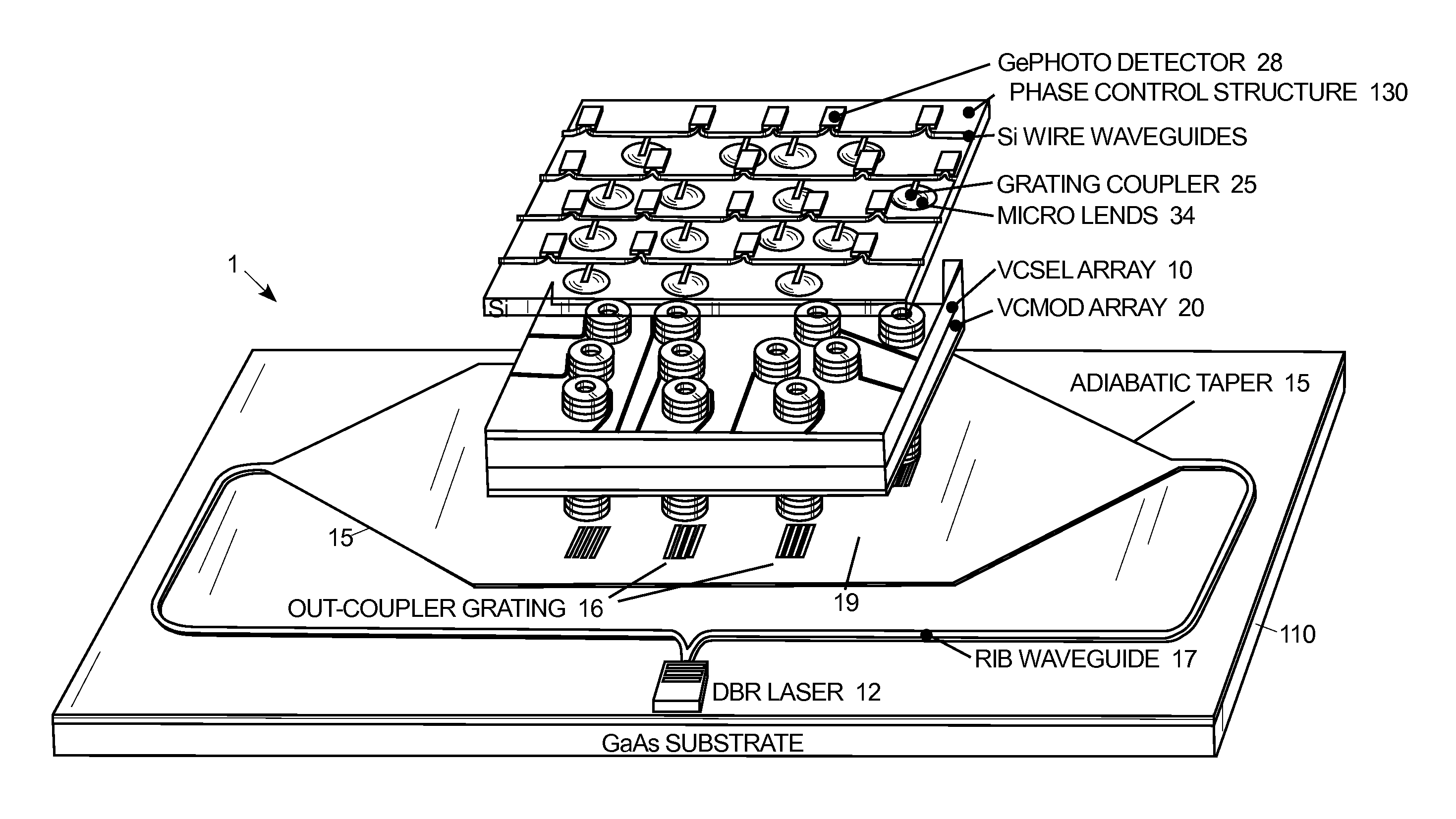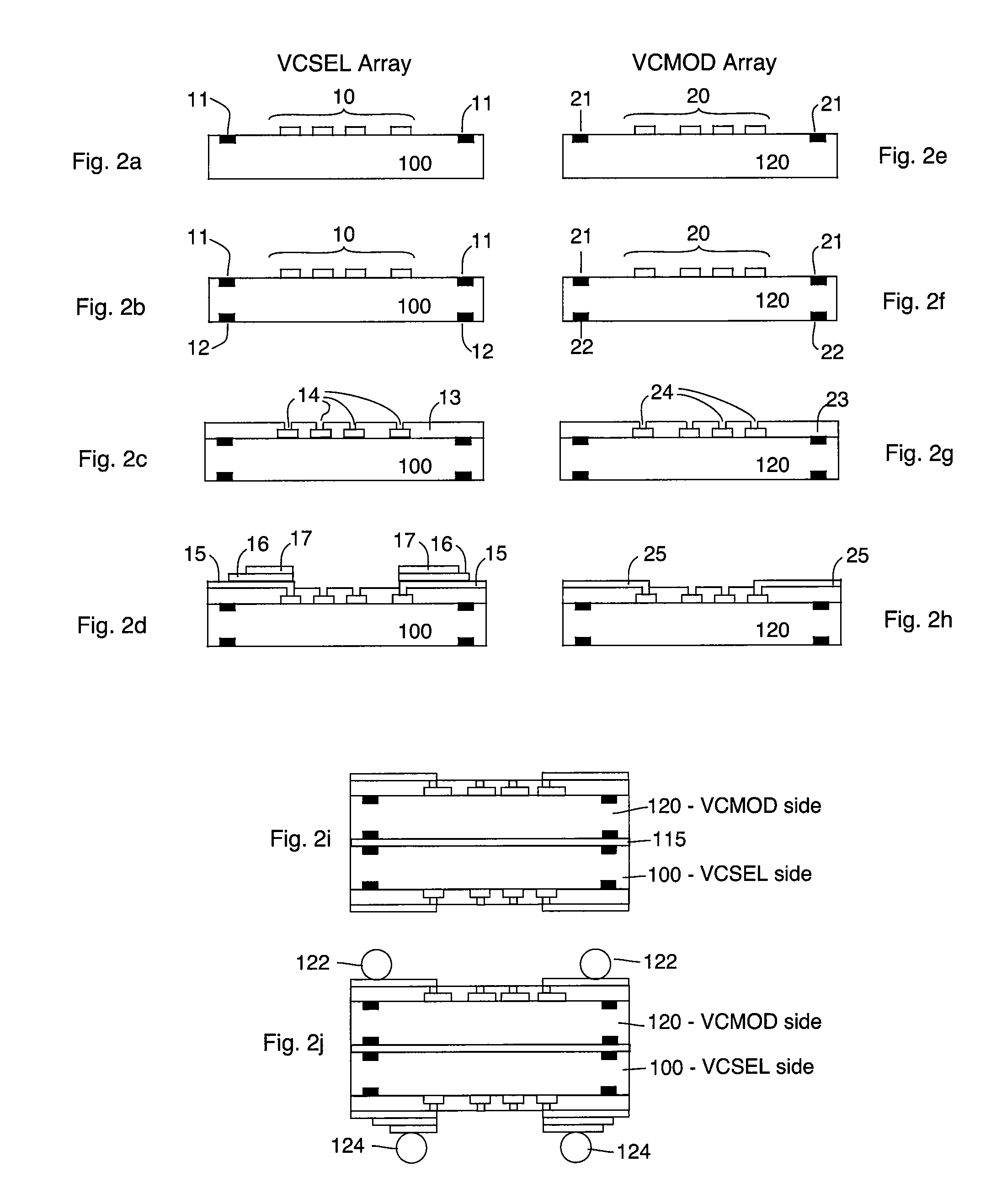Vertically integrated optical phased array with pseudo-random array architecture
a phased array and array technology, applied in semiconductor lasers, electrical devices, laser details, etc., can solve the problems of limited temperature range of operation, grating lobes, slow steering speed (10's of ms range), etc., and achieve the effect of reducing grating lobes
- Summary
- Abstract
- Description
- Claims
- Application Information
AI Technical Summary
Benefits of technology
Problems solved by technology
Method used
Image
Examples
Embodiment Construction
[0018]The key features of the prior art optical phased arrays and the novel V-OPA device disclosed herein are compared in the Table below.
[0019]
Waveguide Self-Locked OPAOPA TechnologyV-OPAVCSELsLC-OPAOPAOPA Dimension2221Beam Scanning >10 msSpeedPhase shift per 2π2πelement(cm long WG)Grating LobesNoYesYesYesMode hoppingNoYesN / ANoIndep. phase / amp YesNoNoYescontrol
[0020]Overview of the V-OPA Device and the Manufacture of Same
[0021]A schematic diagram of a preferred embodiment the V-OPA device 1 is shown in FIG. 1 as a perspective view thereof. The various device layers are intentionally displaced in the vertical direction for better visualization of their structure The V-OPA device 1 of the present invention is proposed to preferably consist of four main functional layers:
[0022](1) A 2-D array of vertical cavity surface emitting lasers (VCSELs) 10, preferably with a wall-plug efficiency of >40%, for generating emitting optical beamlets 18 of the phased array (see FIG. 2s). The VCSELs 1...
PUM
 Login to View More
Login to View More Abstract
Description
Claims
Application Information
 Login to View More
Login to View More - R&D
- Intellectual Property
- Life Sciences
- Materials
- Tech Scout
- Unparalleled Data Quality
- Higher Quality Content
- 60% Fewer Hallucinations
Browse by: Latest US Patents, China's latest patents, Technical Efficacy Thesaurus, Application Domain, Technology Topic, Popular Technical Reports.
© 2025 PatSnap. All rights reserved.Legal|Privacy policy|Modern Slavery Act Transparency Statement|Sitemap|About US| Contact US: help@patsnap.com



